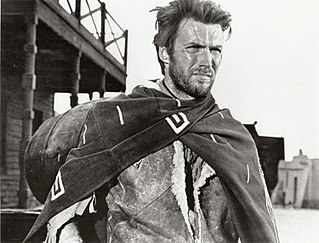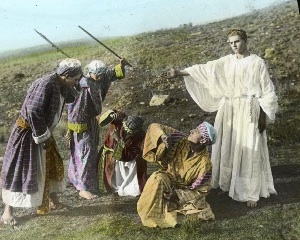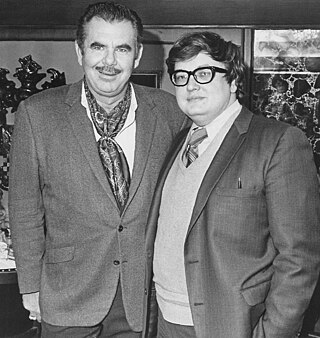Related Research Articles

A cult film or cult movie, also commonly referred to as a cult classic, is a film that has acquired a cult following. Cult films are known for their dedicated, passionate fanbase which forms an elaborate subculture, members of which engage in repeated viewings, dialogue-quoting, and audience participation. Inclusive definitions allow for major studio productions, especially box-office bombs, while exclusive definitions focus more on obscure, transgressive films shunned by the mainstream. The difficulty in defining the term and subjectivity of what qualifies as a cult film mirror classificatory disputes about art. The term cult film itself was first used in the 1970s to describe the culture that surrounded underground films and midnight movies, though cult was in common use in film analysis for decades prior to that.

A film genre is a stylistic or thematic category for motion pictures based on similarities either in the narrative elements, aesthetic approach, or the emotional response to the film.
"New queer cinema" is a term first coined by the academic B. Ruby Rich in Sight & Sound magazine in 1992 to define and describe a movement in queer-themed independent filmmaking in the early 1990s.

The cinema of the United States, consisting mainly of major film studios along with some independent films, has had a large effect on the global film industry since the early 20th century. The dominant style of American cinema is classical Hollywood cinema, which developed from 1910 to 1962 and is still typical of most films made there to this day. While Frenchmen Auguste and Louis Lumière are generally credited with the birth of modern cinema, American cinema soon came to be a dominant force in the emerging industry. As of 2017, it produced the fourth-largest number of films of any national cinema, after Films in A continent of Asia, Including India, Japan, Including Tokusatsu, including Kaiju and Anime films and China, with more than 600 English-language films released on average every year. While the national cinemas of the United Kingdom, Canada, Australia, and New Zealand also produce films in the same language, they are not part of the Hollywood system. Because of this, Hollywood has also been considered a transnational cinema, and has produced multiple language versions of some titles, often in Spanish or French. Contemporary Hollywood often outsources production to the United Kingdom, Canada, Australia, and New Zealand. The major film studios of Hollywood are the primary source of the most commercially successful and most ticket-selling movies in the world.

The cinema of Hong Kong is one of the three major threads in the history of Chinese language cinema, alongside the cinema of China and the cinema of Taiwan. As a former British colony, Hong Kong had a greater degree of political and economic freedom than mainland China and Taiwan, and developed into a filmmaking hub for the Chinese-speaking world.
The New Wave, also called the French New Wave, is a French art film movement that emerged in the late 1950s. The movement was characterized by its rejection of traditional filmmaking conventions in favor of experimentation and a spirit of iconoclasm. New Wave filmmakers explored new approaches to editing, visual style, and narrative, as well as engagement with the social and political upheavals of the era, often making use of irony or exploring existential themes. The New Wave is often considered one of the most influential movements in the history of cinema.

An art film, art cinema, or arthouse film, is typically an independent film, aimed at a niche market rather than a mass market audience. It is "intended to be a serious, artistic work, often experimental and not designed for mass appeal", "made primarily for aesthetic reasons rather than commercial profit", and containing "unconventional or highly symbolic content".

The New Hollywood, Hollywood Renaissance, American New Wave, or New American Cinema, was a movement in American film history from the mid-1960s to the early 1980s, when a new generation of filmmakers came to prominence. They influenced the types of film produced, their production and marketing, and the way major studios approached filmmaking. In New Hollywood films, the film director, rather than the studio, took on a key authorial role.

Mormon cinema usually refers to films with themes relevant to members of the Church of Jesus Christ of Latter-day Saints. The term has also been used to refer to films that do not necessarily reflect Mormon themes but have been made by Mormon filmmakers. Films within the realm of Mormon cinema may be distinguished from institutional films produced by the LDS Church, such as Legacy and Testaments, which are made for instructional or proselyting purposes and are non-commercial. Mormon cinema is produced mainly for the purposes of entertainment and potential financial success.

The race film or race movie was a genre of film produced in the United States between about 1915 and the early 1950s, consisting of films produced for black audiences, and featuring black casts. Approximately five hundred race films were produced. Of these, fewer than one hundred remain. Because race films were produced outside the Hollywood studio system, they were largely forgotten by mainstream film historians until they resurfaced in the 1980s on the BET cable network. In their day, race films were very popular among African-American theatergoers. Their influence continues to be felt in cinema and television marketed to African-Americans.

Hood film is a 1990s film genre originating in the United States, which features aspects of urban African American or Hispanic American culture. John Singleton, Mario Van Peebles, F. Gary Gray, Hughes Brothers, and Spike Lee are all directors who have created work typically classified as part of this genre. The genre has been identified as a sub-genre of the gangster film genre.

Film criticism is the analysis and evaluation of films and the film medium. In general, film criticism can be divided into two categories: journalistic criticism that appears regularly in newspapers, magazines and other popular mass-media outlets; and academic criticism by film scholars who are informed by film theory and are published in academic journals. Academic film criticism rarely takes the form of a review; instead it is more likely to analyse the film and its place in the history of its genre or in the whole of film history.
Linguistic film theory is a form of film theory that studies the aesthetics of films by investigating the concepts and practices that comprise the experience and interpretation of movies.
Janet Staiger is the William P. Hobby Centennial Professor Emeritus of Communication in the Department of Radio-Television-Film and Professor Emeritus of Women's and Gender Studies at the University of Texas at Austin.
Beryl Fox is a Canadian documentary film director and producer.
Annette Frieda Kuhn, FBA is a British author, cultural historian, educator, researcher, editor and feminist. She is known for her work in screen studies, visual culture, film history and cultural memory. She is Professor and Research Fellow in Film Studies at Queen Mary University of London.
In film studies, historical poetics is a scholarly approach to studying film, which David Bordwell outlined in his book Making Meaning (1989). Poetics studies the text itself rather than its production, reception or cultural significance and it can therefore be seen as a logical first step - though expressly not the last step - in terms of understanding how a narrative text works.
Audience studies is a discipline and field of study, a sub-set of media studies, that investigates the processes of media audiences using different methodologies to test and develop theories of audiences' processes of reception. Much of the field borrows concepts from literary theory and research approaches from cultural studies. The primary media of study are film and television and the field intersects in many ways, including its methods used and its focus on everyday media audiences, with fan studies. Audience studies emerged as a field in the early 20th century as a form of market research, but slowly, with the rise of film studies, became popular in an academic context.
American eccentric cinema is a mode of contemporary American filmmaking that emerged in what has been termed the metamodern or new sincerity. Its attachment to indie cinema has led some to consider it a movement and genre of cinema in the United States. Its key filmmakers, including Wes Anderson, Charlie Kaufman, and Spike Jonze, are at times referred to as the "American Eccentrics". It occurred during the 1990s and 2000s, when indie directors sought to create films that diverted from the style and content of Hollywood franchise films. American eccentric cinema came in opposition to the mainstream ideas of formulaic narratives and the digitisation within films and new technologies that came about during the time period. American eccentric cinema is marked by films that are "deeply concerned with ethics and morality, the obligations of the individual, the effects of family breakdown, and social alienation."

The Media History Digital Library (MHDL) is a non-profit, open access digital archive founded by David Pierce and directed by Eric Hoyt that compiles books, magazines, and other print materials related to the histories of film, broadcasting, and recorded sound and makes these materials accessible online for free. The MHDL both digitizes physical materials and acquires digital copies from outside libraries, archives, collectors, and other collaborators. Most of the material in its more than 2.5 million pages is in the public domain and therefore free for all to use with no restrictions.
References
- ↑ Kuhn, Annette (2002). An Everyday Magic: Cinema and Cultural Memory. I.B. Tauris & Co. Ltd. ISBN 9781860648670.
- ↑ Elsaesser, Thomas (1986). "The "New" Film History". Sight and Sound. 55 (4): 246–251.
- ↑ Maltby, Richard; Biltereyst, Daniël; Philippe, Meers (2011). Explorations in new cinema history : approaches and case studies. Wiley-Blackwell. pp. xii. ISBN 9781405199490. OCLC 692084803.
- ↑ Melvyn, Stokes; Maltby, Richard (1999). Identifying Hollywood's audiences : cultural identity and the movies. British Film Institute. ISBN 9780851707389. OCLC 41338511.
- ↑ Melvyn, Stokes; Maltby, Richard (2001). Hollywood spectatorship : changing perceptions of cinema audiences. BFI Pub. ISBN 9780851708119. OCLC 45306616.
- ↑ Maltby, Richard; Melvyn, Stokes; Allen, Robert Clyde (2007). Going to the movies : Hollywood and the social experience of cinema. University of Exeter Press. ISBN 9780859898119. OCLC 180880538.
- ↑ Maltby, Richard (2011). "New Cinema Histories". Explorations in New Cinema History: Approaches and Case Studies: 4.